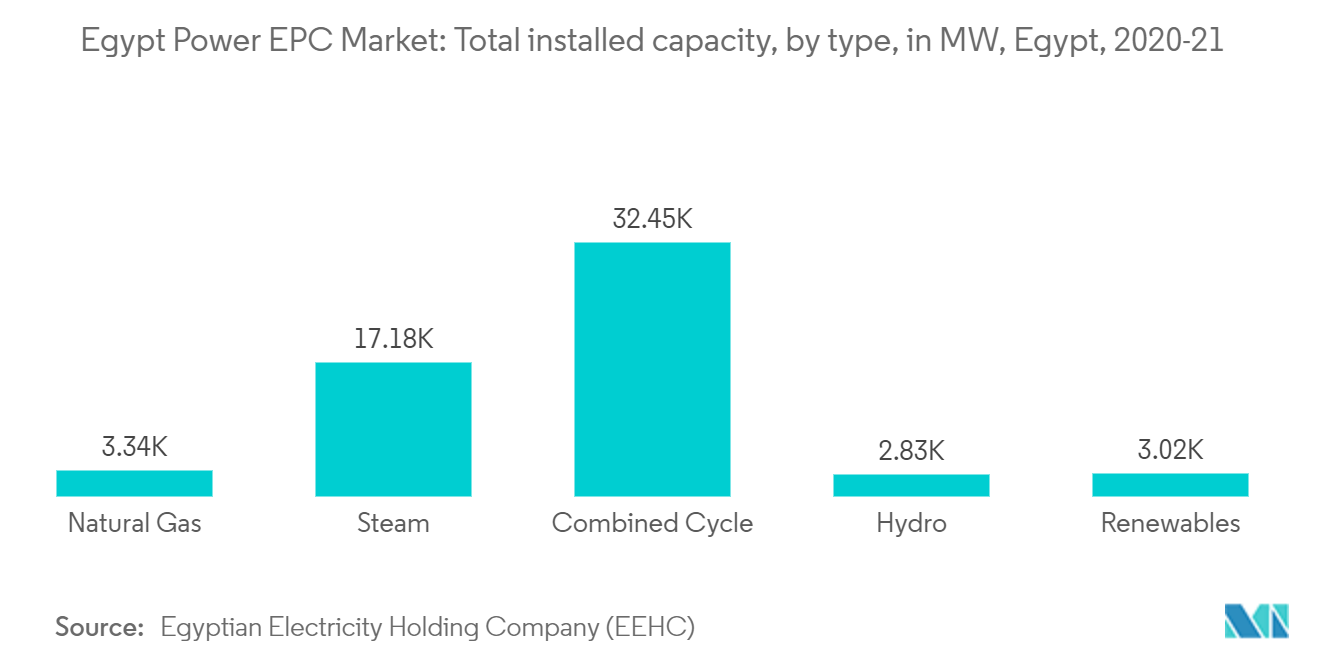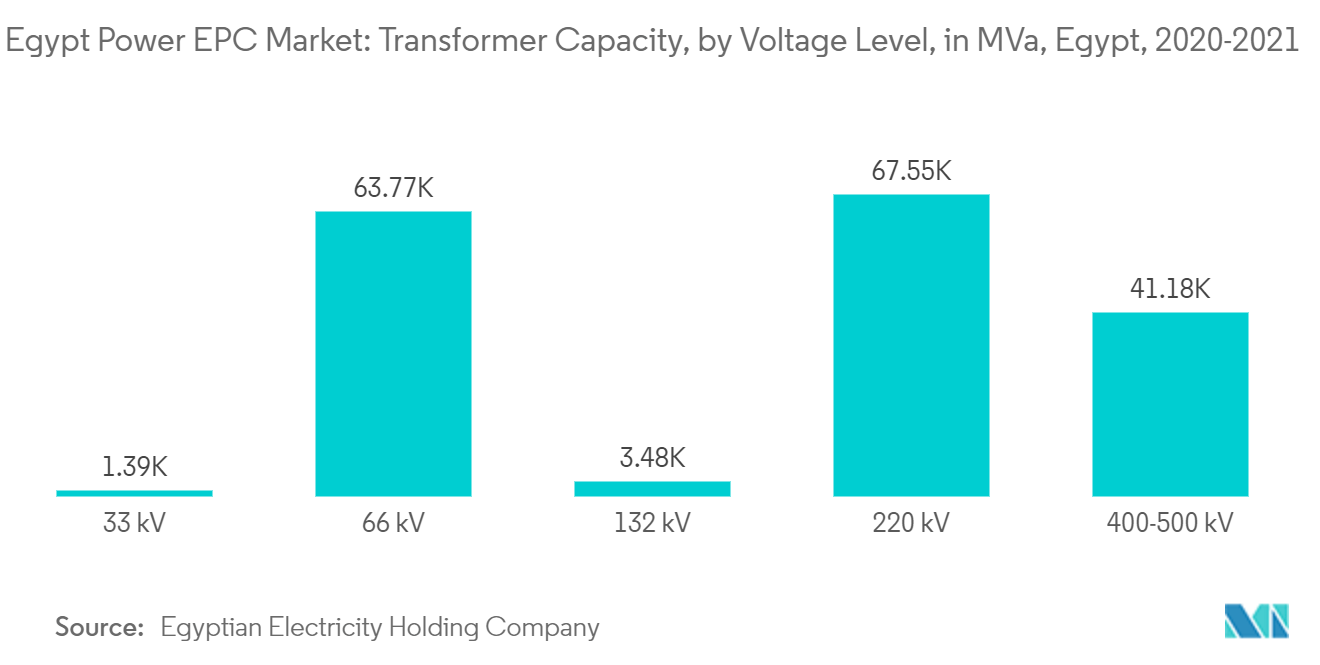Market Trends of Egypt Power EPC Industry
This section covers the major market trends shaping the Egypt Power EPC Market according to our research experts:
Conventional Thermal Segment Expected to Dominate the Market
- Conventional thermal is the power generated through various sources such as coal, natural gas, oil, and nuclear. Egypt has traditionally depended on fossil fuels for energy generation, and due to this, the country's current power generation mix is dominated by thermal generation.
- As of 2021, according to the Egyptian Electricity Holding Company (EEHC), installed capacity stood at nearly 58.82 GW, of which nearly 52.97 GW (~90%) came from conventional thermal power plants.
- In Egypt, conventional thermal plants can be segmented into natural gas, steam (fired by oil), and combined cycle based on fuel and operation. Of the total installed capacity, nearly 55.2% came from combined cycle plants, while oil and gas-fired capacity accounted for 29.2% and 5.7% of the total capacity.
- Despite investing in renewables, the country is still investing in the expansion of its present thermal capacity. For instance, in December 2020, SEPCO III, a subsidiary of POWERCHINA, signed an engineering, procurement, and construction (EPC) contract with ACWA Power for the planned 2,389 MW Luxor Power Plant in Egypt. The USD 2.2 billion combined cycles Dairut-Luxor IPP (Independent Power Producer) project would be developed under the Build-Own-Operate (BOO) scheme. It will use natural gas and alternative liquid fuel.
- Therefore, owing to the overwhelming dominance, the conventional thermal segment is expected to dominate the Egypt power EPC market during the forecast period.

Increasing investments in the Transmission and Distribution segment to drive the Market
- Egypt is one of the most populated Middle-East and African countries. Due to its growing population and urbanization, power demand has grown significantly during the last few years. To meet the domestic demand, the country has been upscaling its power generation capabilities by adding new power generation capacity to the grid, both from conventional and renewable sources.
- The country is also investing heavily in the upgradation and interconnection of its national grid with regional neighbors to develop a unified national grid to transform Egypt into a regional and global hub for energy exchange between the Arab countries, Africa, and Europe. To achieve this, the country is working on major interconnection projects with Saudi Arabia, Cyprus, Greece, and the Gulf Interconnection Authority.
- According to the Egyptian Electricity Holding Company (EEHC), over the period of 2020/21, the total transformer capacity in Egypt increased by 12.4%, while the total number of transformers increased by 3.4%, and the total number of substations increased by 2.5%.
- The market is dominated by the 66 kV segment in terms of capacity due to 66 kV transformers being most commonly deployed for mid-range transmission across the country, while the 220 kV transformers, though lesser in number, have a higher cumulative MVa capacity due to the deployment of these transformers in long-range transmission across the Nile Valley. As investments in this market segment rise, these subsegments are expected to drive the Transmission and Distribution segment during the forecast period.
- Another factor influencing the growth of the power transformer is the increasing renewable energy generation. As of 2021, Egypt has a total installed renewable capacity of 3.02 GW, and the country has set a target of producing 42% of its total electricity from renewable sources. During 2017 and 2020, Egypt's installed renewable energy capacity grew at a CAGR of greater than 50%, while generation from wind and solar increased by 24.2% and 11.6% year-on-year during 2021. The market was heavily affected the COVID-19 pandemic, as no capacity additions were made during 2020/21. However, many large renewable energy projects are under development, and the installed renewable capacity is expected to grow steadily during the forecast period.
- Most of the renewable capacity comes from the 1465 MW Benban Solar PV plant, the 26 MW Kom Ombo Solar PV plant, the 20 MW Kuraimat Solar CSP plant, and the 1385 MW wind farms. As renewable energy generation from sources such as solar and wind is variable, traditional transformers are unsuitable for grid integration of electricity generated from renewable energy. Due to this, renewable energy grids require smart transformers which allow bi-directional electricity flow, which prevents wastage or deficit of electricity.
- Such large-scale developments in the electricity generation and transmission sectors are expected to drive the power EPC market in the country during the forecast period.


